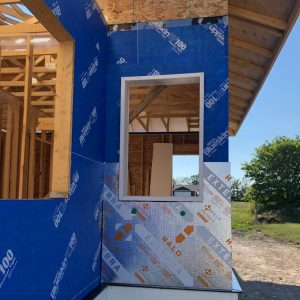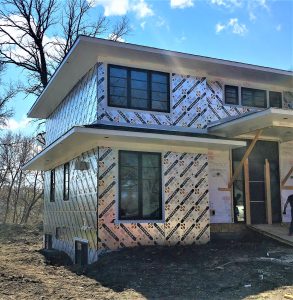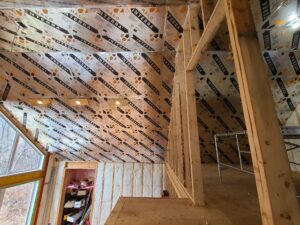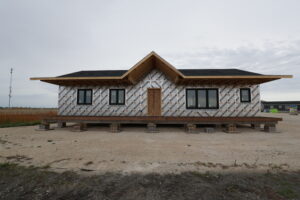Everything becomes more brittle in the cold — including Halo foam board insulation and its laminate layers. So if you have no choice but to install it in the middle of winter, you’ll have to take certain precautions to ward off possible cold-weather damage to your panels.
In the post below, we’ll walk you through 5 simple steps that will help you keep your Halo product free from damage on winter’s chilliest days.
1. Use Screws With 2-inch Washers
It sounds simple, but opting for screws with 2-inch washers can give you an edge when installing Exterra in frigid weather. That’s because the 2-inch washers provide a sufficient bearing surface so as not to damage the foam board when it’s somewhat brittle due to the extreme cold.
2. Avoid Using Adhesive in Cold Conditions
Although its lowest service temperature is -40°C/-40°F, PL300 glue has a recommended minimum application temperature of only 15°C/59°F. So, if you attempt to use it in temps below this threshold, there’s a chance it won’t bond properly. So, monitor the temperatures at the time of installation, and avoid using adhesive on the rigid insulation panels when it’s cold out.
3. Use the Right Tape
Just like glue, most tape doesn’t fare well on frigid days. Here’s an exception, though — red and blue tuck tape, which is rated to an impressive -18°C/-0.4°F. So, if you’ve got to tape your newly installed foam board’s joints (a must if you want it to serve as a compliant weather barrier) on a chilly wintry day, we’d urge you to use this tape.
But if you’re lucky enough to be somewhere where it’s below -18°C (so most of Canada or the American mid-west in winter), you’ll have to wait to tape another day. Or, jump to our next tip!
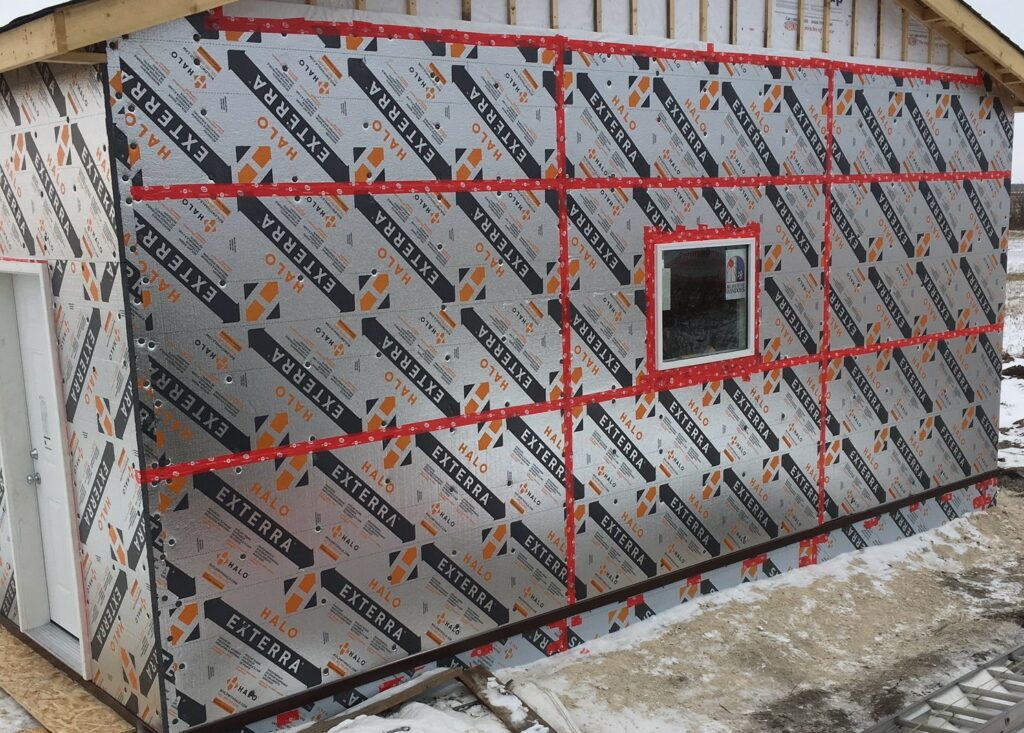

Don't miss a thing!
Subscribe for exclusive content, insider industry news and limited edition webcasts.
4. Use a Water-Resistive Barrier (WRB) In Lieu of Tape
It’s understandable that you might feel nervous about using tape on the foam board’s joints in certain conditions. And while a product like Halo Exterra is a compliant weather barrier when taped, nothing stops you in those circumstance from applying a separate water-resistive barrier to the wall assembly. Think of it as cheap insurance!
5. Watch Out for Reflected Light
Reflected light is the enemy of all plastics — including GPS foam board. And if you think you’re safe from this threat in winter, think again! Snow, ice, windows, and other surfaces can all reflect sunlight onto your newly installed (and slightly brittle, due to the chill) Halo and cause the foam to expand or get damaged.
To err on the side of caution, keep your Halo out of the reflected light’s path. This means storing the panels indoors (if practical) right before installing them. And if you can’t get rid of reflective surfaces on your site, you may have to shield the panels after they’re installed. You can do this by installing a sunscreen or tarp on the outside of the scaffolding; this should keep your Halo safe until it disappears behind the exterior finish.

A Few More Tips for Handling Halo Foam Board
Apart from the above, don’t forget the more minor, common sense things. For example, protect the panels from contact with snow (which makes a great reflective surface, by the way). Don’t allow them to get wet. And, as we’ve said above, cover them adequately — clear plastic covering film won’t do.
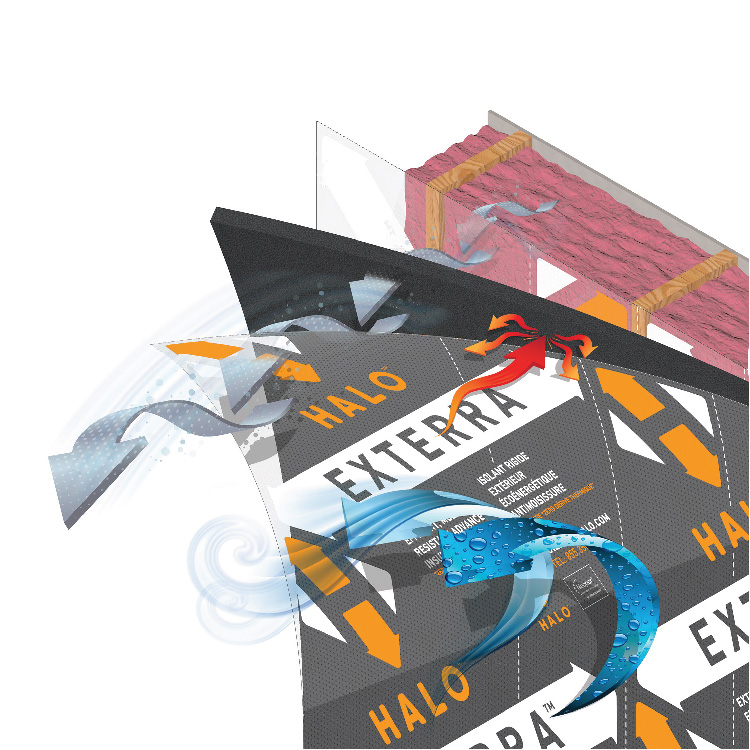
Wrapping It Up
Construction can’t always wait for a warmer day. So, if you’re forced to build in the middle of a North American winter, you should take precautions to safeguard your building materials from damage.
Above, we walked you through 5 sufficiently simple steps you can take to protect Halo’s rigid insulation products from cold-related damage:
- Use screws with 2-inch washers
- Don’t apply adhesive in cold weather
- Choose the correct tape
- Use a water-resistive barrier instead of tape
- Mind the reflected light
And of course, don’t forget about other, smaller precautions, such as storing your foam board in a safe place, covering it with a suitable material, and keeping it away from the elements.

